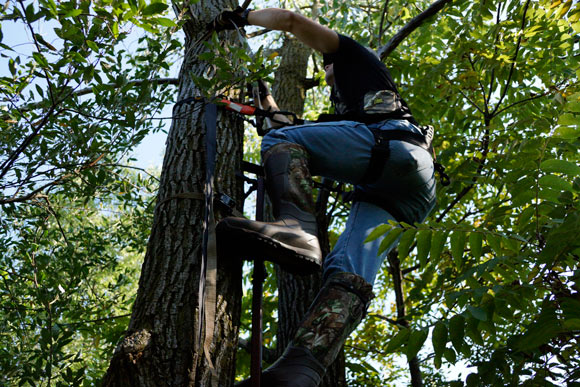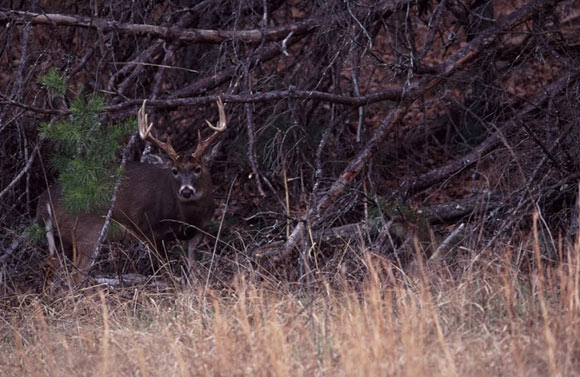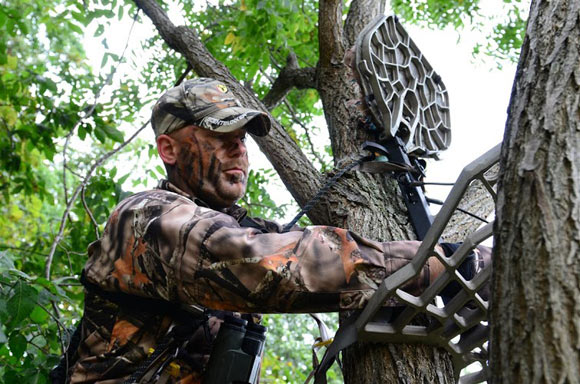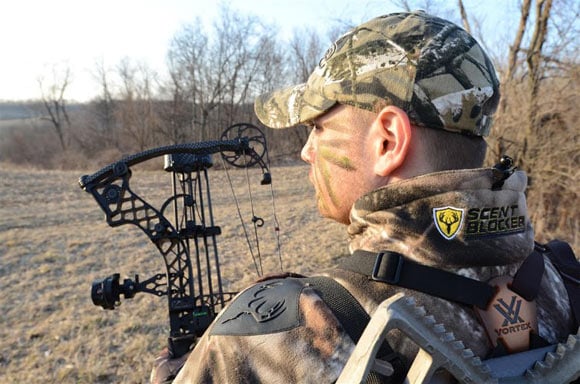LAST UPDATED: May 1st, 2015
As I write this article the Wisconsin whitetail bow season is underway. I’m sure I’m not alone in my excitement of the upcoming seasons. The anticipation is mounting and soon I’ll know if all the preparations made thus far will pay off. Hopefully the hours of scouting, placing trail cameras and hanging tree stands will have been worth it. Even though all my stands are hung, I’m always thinking of other potential stand locations that will give me the upper hand against my opposition once the season has started.
Any time you move a stand, whether it is before, during or after the season, make safety your first priority.
Game Plan
Like all good NFL teams, in order to have a winning season teams must have a game plan and execute it. To win games in the NFL, typically a team must play well and execute plays for 4 quarters of football. If a team cannot execute in the first quarter a good coach will make adjustments to help his team get in the winners column. Bow season should be no different in regards to your “game plan” for stand placement. You must constantly be thinking of ways to exploit your opponent’s weaknesses.
Stand placement should revolve around what the deer are doing at any given time of the season. Place stands in accordance to different phases to increase likelihood of success.
My tree stand placement corresponds to the 4 quarters of the whitetail season. The quarters are as follows: Early Season (Sept 14-Oct 15) Pre Rut (Oct 16-Nov 1) Rut (Nov 2- Dec 1) Late Season (Dec 2-Jan-10). The object is to ensure the best opportunity at exploiting your competition. This starts by knowing and understanding what your opponent is doing during each phase of the season. Place yourself where the deer are and your tag is filled.
Early Season
I routinely hang my stands on field edges during the early season. My preference is near agriculture such as beans, corn, or clover. Deer feed all summer at these food sources so hanging a tree stand on one of these field edges should put you in a position to locate deer. Hunting field edges during the early season also allows you to increase your odds of harvesting a deer early in the game with the most limited impact on the rest of the property. If you’re planning on making any early season tree stand moves, use common sense. First, make sure it is necessary and if at all possible, move it during low deer movement times. If/when I make any early season stand move it’ll be late morning to mid-afternoon; as the majority of the deer movement during the early season is at dawn and dusk.
Any stand relocations should be done in a manner and time-frame that doesn’t impact future hunting.
Pre Rut
The pre rut is without a doubt one of my favorite times of the season to be in the woods. Once you begin to see bucks chasing does and starting to aggressively scrape…. its game on! When the pre rut kicks off don’t forget to get those early season stand locations moved back into the woods a bit; say roughly 50 yards or so. When it’s time to move my pre-rut stands I prefer doing so at mid-day and during inclement weather if at all possible. If I’m near a hot spot I may even pull off a “night ops” stand placement around 10-11pm. Moving and setting stands at night can be beneficial, however remember that deer are often up and moving at night as well. It’s also important to set up for the predominant wind in your area for that time of year. In Wisconsin the wind is often out of the north during pre-rut. Setting up on the downwind side of a trail could really pay dividends.
Any time you are in the woods deer can be on their feet. Be prepared for a shot at any moment; even if you’re not hunting and simply “moving a stand”.
I did a bonehead thing three years ago and decided to move a stand in the late morning during the pre-rut. It was unseasonably warm and sunny with the wind out of the S/E (bad for this spot). I figured the deer would be bedded down and that I’d be able to slip in, hang a Lone Wolf set, and get out undetected. I was wrong! I encountered a 150” dark horned buck working a scrape near the tree I was headed for. We shared a memorable stare down for about 4 seconds from about 15 yards away and he bounced off never to be seen again. In hindsight I should have waited until later that day or even another day. It’s important to remember deer are living and breathing animals that can be unpredictable, but that’s what keeps hunting them exciting.
Rut
The rut is the best time to be in the woods. The piece of property I hunt hosts many traveling bucks during the rut. A good game plan for the rut is to take up real estate and be mobile. My favorite stand set up is the Lone Wolf Alpha Hang On coupled with the 4 piece climbing sticks. I hunt from these stands all year and the majority of the time they remain stationary. When the rut is in full swing it’s important to be able to pick up and move at any time quickly and quietly. The Lone Wolf system I use allows me to do just that. I look for funnel locations with heavy trails running through them.
To kill bucks it is most important to locate does. This is especially true during the pre-rut, rut and sometimes post-rut.
The rut is a chasing game and the bucks are all about breeding. Take advantage of your opponent’s weakness during the rut. Find does and you will find bucks during the rut. When not hunting funnels or saddles I look for well-traveled areas downwind of known doe bedding areas. The majority of mature bucks are going to travel downwind of the bedding area to try and sniff-out an estrus doe. When he does, hopefully you’re in the right place to send an arrow his way.
Late Season
The rut has passed and the bucks have again become slaves to their stomachs. If you still haven’t filled your tag it’s time to make another game time adjustment. Move those stands back to the food sources. If you have late season food plots now is the time to be on them. While deer seem to keep early morning and late afternoon feeding patterns during the late season, don’t be surprised if you find a big buck out feeding during the early afternoon hours.
There isn’t a lot of science involved with moving stands during the season. The most important thing to remember is keep impact as low as possible. If deer are moving around you, anticipate their next move and get as close as you can as quickly and quietly as you can. Shoot straight and have fun!











